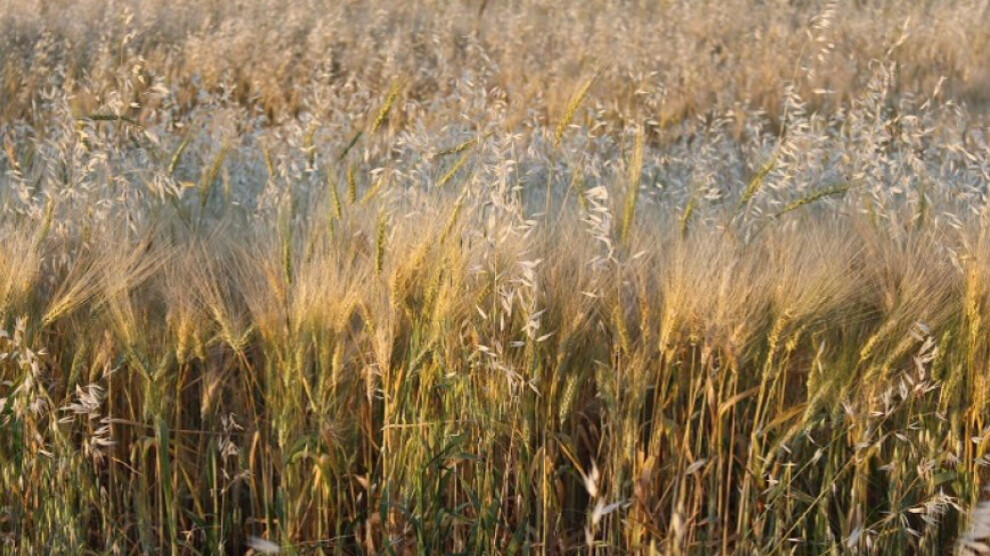Agriculture flourishes in Rojava despite attacks
In Northern and Eastern Syria, which has fertile agricultural lands, 81,673 farmers work on 7 million 521,621 decares. Despite the attacks of the Turkish state, agriculture is flourishing.
In Northern and Eastern Syria, which has fertile agricultural lands, 81,673 farmers work on 7 million 521,621 decares. Despite the attacks of the Turkish state, agriculture is flourishing.

Northern and Eastern Syria is working hard to make full use of its rich natural resources and agricultural potential.
The agricultural potential and soil fertility of Northern and Eastern Syria, which is favourable for the cultivation of different agricultural products thanks to its various geographical features and climatic conditions, are being developed with the right strategies and practices. Wheat is one of the most widely grown crops in the region and forms the basis of the region's agricultural economy. Barley is also an important grain crop. In addition to wheat and barley, corn is also cultivated, as well as cotton. Since cotton is an important raw material used in the textile industry, the cultivation of this product is also an important source of income. Spices such as coriander and cumin are also cultivated in the region where legumes are also grown extensively. Vegetables such as tomatoes, peppers, cucumbers, eggplants, potatoes, onions and fruits such as oranges, grapes and figs are also widely cultivated in Northern and Eastern Syria. In addition to these agricultural products, crops such as pistachios and olives are also grown in the region, increasing the agricultural potential of the region. Since agriculture is an important source of income in Northern and Eastern Syria, the cultivation of various agricultural products is quite common in the region.
81,673 farmers on 7.5 million decares
According to the North-East Syrian Economy and Agriculture Council, in Tabqa Canton, where wheat is cultivated, 3,022 farmers work on 436,463 decares. In Cizîrê Canton, where wheat, barley, legumes, vegetables, potatoes and fruits are planted, 28,120 farmers work on 3,536,831 decares. In Deir ez-Zor Canton, where wheat, barley, legumes and vegetables are cultivated, 22,183 farmers work on 2,063,150 decares. In Manbij Canton, where wheat, legumes, potatoes and fruit are planted, 3,487 farmers work on 101,753 decares.In Raqqa Canton, where wheat and barley are cultivated, 17,854 farmers work on 578,635 decares. In Euphrates Canton, where wheat, barley, legumes and potatoes are intensively cultivated, 7,007 farmers work on 804,794 decares.
In Northern and Eastern Syria, where 6,203,020 decares of wheat, 735,056 decares of barley, 179,992 decares of legumes, 193,651 decares of vegetables, 4,489 decares of potatoes, 205,418 decares of fruits are grown, 81,673 farmers work on 7,521,621 decares. Irrigation is carried out on 4,728,515 decares of these agricultural lands, while 2,793,111 decares are not irrigated.
Great damage caused by occupation attacks
Agriculture is vital for the economy of the region and constitutes the source of livelihood. The occupying Turkish state increased its attacks on agricultural lands in Northern and Eastern Syria and caused great damage to crops during the harvest period. As a result of the attacks in recent days, dozens of decares of agricultural land were burnt to ashes and farmers suffered great damage. Especially when these attacks coincided with the harvest period, farmers faced great victimisation. Zirgan, Manbij, Shêrewa and Shehba are among the targeted areas. According to the North-East Syrian Economy and Agriculture Board, 34,550 decares of agricultural land were burnt as a result of the attacks of the Turkish state in 2019 and at least 2,238 decares in 2023.
Precautions against attacks
The Emergency and Fire Brigades of the Democratic Municipalities of North and East Syria intervened with the necessary equipment and techniques to control and extinguish the fires started by the attacks of the invading Turkish army on agricultural lands and to prevent the spread of fire. They also carry out the necessary evacuation operations by creating a safe zone to prevent the fires from threatening the safety of people in the surrounding areas. At least 83 emergency and fire brigades were established in villages, towns and cities in Northern and Eastern Syria.